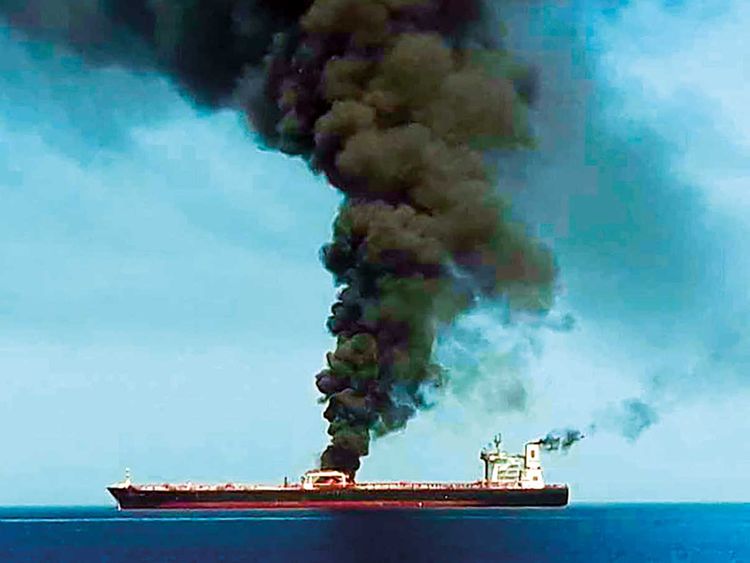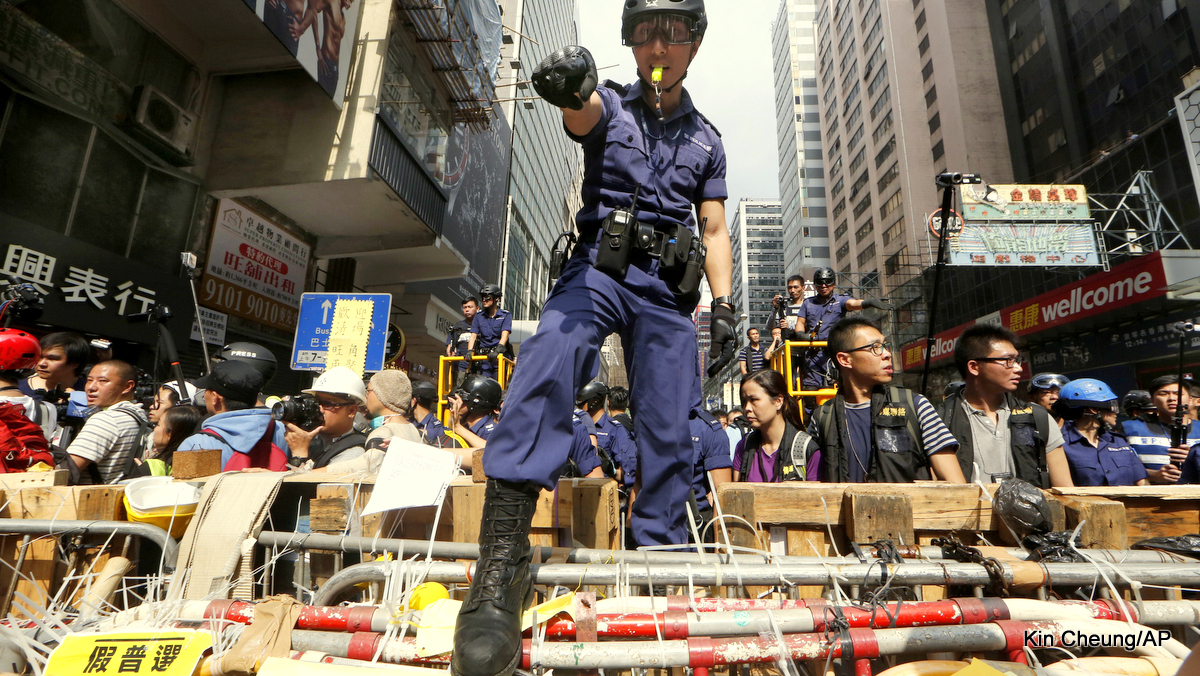On Wednesday June 12th, 2019, Democratic presidential candidate Sen. Bernie Sanders (I-VT) spoke about his views on democratic socialism and why it would be good for the USA in a speech at George Washington University in Washington, DC.
Bernie Sanders represents a powerful voice in US politics. The publication of this text and video does not signify an endorsement of Bernie Sanders by Global Research. It’s purpose is to inform our readers.
.
.
Transcript is as follows.
My friends, we are in the midst of a defining and pivotal moment for our country and our planet. And, with so many crises converging upon us simultaneously, it is easy for us to become overwhelmed or depressed – or to even throw up our hands in resignation. But my message to you today is that if there was ever a moment in the history of our country where despair was not an option, this is that time.
If there was ever a moment where we had to effectively analyze the competing political and social forces which define this historical period, this is that time.
If there was ever a moment when we needed to stand up and fight against the forces of oligarchy and authoritarianism, this is that time.
And, if there was ever a moment when we needed a new vision to bring our people together in the fight for justice, decency and human dignity, this is that time.
In the year 2019, the United States and the rest of the world face two very different political paths. On one hand, there is a growing movement toward oligarchy and authoritarianism in which a small number of incredibly wealthy and powerful billionaires own and control a significant part of the economy and exert enormous influence over the political life of our country.
On the other hand, in opposition to oligarchy, there is a movement of working people and young people who, in ever increasing numbers, are fighting for justice.
They are the teachers taking to the streets to make certain that schools are adequately funded and that their students get a quality education.
They are workers at Disney, Amazon, Walmart and the fast food industry standing up and fighting for a living wage of at least $15 an hour and the right to have a union.
They are young people taking on the fossil fuel industry and demanding policies that transform our energy system and protect our planet from the ravages of climate change.
They are women who refuse to give control of their bodies to local, state and federal politicians.
They are people of color and their allies demanding an end to systemic racism and massive racial inequities that exist throughout our society.
They are immigrants and their allies fighting to end the demonization of undocumented people and for comprehensive immigration reform.
When we talk about oligarchy, let us be clear about what we mean. Right now, in the United States of America, three families control more wealth than the bottom half of our country, some 160 million Americans. The top 1% own more wealth than the bottom 92% and 49% of all new income generated today goes to the top 1%. In fact, income and wealth inequality today in the United States is greater than at any time since the 1920s.
And when we talk about oligarchy, it is not just that the very rich are getting much richer. It is that tens of millions of working-class people, in the wealthiest country on earth, are suffering under incredible economic hardship, desperately trying to survive.
Today, nearly 40 million Americans live in poverty and tonight, 500,000 people will be sleeping out on the streets. About half of the country lives paycheck to paycheck as tens of millions of our people are an accident, a divorce, a sickness or a layoff away from economic devastation.
While many public schools throughout the country lack the resources to adequately educate our young people, we are the most heavily incarcerated nation on earth.
After decades of policies that have encouraged and subsidized unbridled corporate greed, we now have an economy that is fundamentally broken and grotesquely unfair.
Even while macroeconomic numbers like GDP, the stock market and the unemployment rate are strong, millions of middle class and working people struggle to keep their heads above water, while the billionaire class consumes the lion’s share of the wealth that we are collectively creating as a nation.
In the midst of a so-called booming economy real wages for the average worker have barely risen at all. And despite an explosion in technology and worker productivity, the average wage of the American worker in real dollars is no higher than it was 46 years ago and millions of people are forced to work two or three jobs just to survive.
And here is something quite incredible that tells you all you need to know about the results of unfettered capitalism. All of us want to live long, happy, and productive lives but. in America today the very rich live on average 15 years longer than the poorest Americans.
In 2014, in McDowell County, West Virginia, one of the poorest counties in the nation, life expectancy for men was 64 years. In Fairfax County, Virginia, a wealthy county, just 350 miles away, life expectancy for men was nearly 82 years, an 18-year differential. The life expectancy gap for women in the two counties was 12 years.
In other words, the issue of unfettered capitalism is not just an academic debate, poverty, economic distress and despair are life-threatening issues for millions of working people in the country.
While the rich get richer they live longer lives. While poor and working families struggle economically and often lack adequate healthcare, their life expectancy is declining for the first time in modern American history.
Taken together, the American Dream of upward mobility is in peril. In fact, if we don’t turn things around, our younger generation will, for the first time in living memory, have a lower standard of living than their parents. This is not acceptable.
Globally, the situation is even more shocking with most of the world’s wealth concentrated among a very few, while billions of people have almost nothing. Today, the world’s richest 26 billionaires now own as much wealth as the poorest 3.8 billion people on the planet – half of the world’s population.
But the struggle we are facing today is not just economic.

Across the globe, the movement toward oligarchy runs parallel to the growth of authoritarian regimes – like Putin in Russia, Xi in China, Mohamed Bin Salman in Saudi Arabia, Rodrigo Duterte in the Philippines, Jair Bolsonaro in Brazil, and Viktor Orbán in Hungary among others.
These leaders meld corporatist economics with xenophobia and authoritarianism. They redirect popular anger about inequality and declining economic conditions into violent rage against minorities – whether they are immigrants, racial minorities, religious minorities or the LGBT community. And to suppress dissent, they are cracking down on democracy and human rights.
In the United States, of course, we have our own version of this movement – which is being led by President Trump and many of his Republican allies who are attempting to divide our country up and attack these same communities. How sad it is that President Trump sees these authoritarian leaders as friends and allies.
This authoritarian playbook is not new. The challenge we confront today as a nation, and as a world, is in many ways not different from the one we faced a little less than a century ago, during and after the Great Depression in the 1930s. Then, as now, deeply-rooted and seemingly intractable economic and social disparities led to the rise of right-wing nationalist forces all over the world.
In Europe, the anger and despair was ultimately harnessed by authoritarian demagogues who fused corporatism, nationalism, racism and xenophobia into a political movement that amassed totalitarian power, destroyed democracy, and ultimately murdering millions of people – including members of my own family.
But we must remember that those were not the only places where dark forces tried to rise up.
Today, we are all rightly repulsed by the sight of neo-Nazis and Klansmen openly marching in Charlottesville, VA, and we are horrified by houses of worship being shot up by right-wing terrorists. But on February 20, 1939, over 20,000 Nazis held a mass rally – not in Berlin, not in Rome, but in Madison Square Garden, in front of a 30-foot-tall banner of George Washington – bordered with swastikas – in New York City.
But back then, those American extremists could not replicate the success of their authoritarian brethren across the ocean because we in the United States, thankfully, made a different choice than Europe did in responding to the era’s social and economic crises.
We rejected the ideology of Mussolini and Hitler – we instead embraced the bold and visionary leadership of President Franklin Delano Roosevelt, then the leader of the progressive wing of the Democratic Party.
Together with organized labor, leaders in the African American community and progressives inside and outside the Party, Roosevelt led a transformation of the American government and the American economy.
Like today, the quest for transformative change was opposed by big business, Wall Street, the political establishment, by the Republican Party and by the conservative wing of FDR’s own Democratic Party. And he faced the same scare tactics then that we experience today – red baiting, xenophobia, racism and anti-Semitism.
In a famous 1936 campaign speech Roosevelt stated,
“We had to struggle with the old enemies of peace – business and financial monopoly, speculation, reckless banking, class antagonism, sectionalism, war profiteering.
“They had begun to consider the government of the United States as a mere appendage to their own affairs. We know now that government by organized money is just as dangerous as government by organized mob.
“Never before in all our history have these forces been so united against one candidate as they stand today. They are unanimous in their hate for me – and I welcome their hatred.”
Despite that opposition, by rallying the American people, FDR and his progressive coalition created the New Deal, won four terms, and created an economy that worked for all and not just the few.
Today, New Deal initiatives like Social Security, unemployment compensation, the right to form a union, the minimum wage, protection for farmers, regulation of Wall Street and massive infrastructure improvements are considered pillars of American society.
But, while he stood up for the working families of our country, we can never forget that President Roosevelt was reviled by the oligarchs of his time, who berated these extremely popular programs as “socialism.”
Similarly, in the 1960s, when Lyndon Johnson brought about Medicare, Medicaid and other extremely popular programs, he was also viciously attacked by the ruling class of this country.
And here is the point. It is no exaggeration to state, that not only did FDR’s agenda improve the lives of millions of Americans, but the New Deal was enormously popular politically and helped defeat far-right extremism.
For a time.
Today, America and the world are once again moving toward authoritarianism – and the same right-wing forces of oligarchy, corporatism, nationalism, racism and xenophobia are on the march, pushing us to make the apocalyptically wrong choice that Europe made in the last century.
Today, we now see a handful of billionaires with unprecedented wealth and power.
We see huge private monopolies – operating outside of any real democratic oversight and often subsidized by taxpayers – with the power to control almost every aspect of our lives.
They are the profit-taking gatekeepers of our healthcare, our technology, our finance system, our food supply and almost all of the other basic necessities of life. They are Wall Street, the insurance companies, the drug companies, the fossil fuel industry, the military industrial complex, the prison industrial complex and giant agri-businesses.
They are the entities with unlimited wealth who surround our nation’s capitol with thousands of well-paid lobbyists, who to a significant degree write the laws that we live under.
Today, we have a demagogue in the White House who, for cheap political gain, is attempting to deflect the attention of the American people away from the real crises that we face and, instead, is doing what demagogues always do – and that is divide people up and legislate hatred. This is a president who supports brutal family separations, border walls, Muslim bans, anti-LGBT policies, deportations and voter suppression.
It is my very strong belief that the United States must reject that path of hatred and divisiveness – and instead find the moral conviction to choose a different path, a higher path, a path of compassion, justice and love.
It is the path that I call democratic socialism.
Over eighty years ago Franklin Delano Roosevelt helped create a government that made transformative progress in protecting the needs of working families. Today, in the second decade of the 21st century, we must take up the unfinished business of the New Deal and carry it to completion.
This is the unfinished business of the Democratic Party and the vision we must accomplish.
In order to accomplish that goal, it means committing ourselves to protecting political rights, to protecting civil rights – and to protect economic rights of all people in this country.
As FDR stated in his 1944 State of the Union address: “We have come to a clear realization of the fact that true individual freedom cannot exist without economic security and independence.”
Today, our Bill of Rights guarantees the American people a number of important constitutionally protected political rights. And while we understand that these rights have not always been respected and we have so much more work to do, we are proud that our constitution guarantees freedom of religion, freedom of expression, freedom of assembly, a free press and other rights because we understand that we can never have true American freedom unless we are free from authoritarian tyranny.
Now, we must take the next step forward and guarantee every man, woman and child in our country basic economic rights – the right to quality healthcare, the right to as much education as one needs to succeed in our society, the right to a good job that pays a living wage, the right to affordable housing, the right to a secure retirement, and the right to live in a clean environment.
We must recognize that in the 21st century, in the wealthiest country in the history of the world, economic rights are human rights.
That is what I mean by democratic socialism.
As Dr. Martin Luther King Jr. said, “Call it democracy, or call it democratic socialism, but there must be a better distribution of wealth within this country for all of God’s children.”
To realize this vision, we must not view America only as a population of disconnected individuals, we must also view ourselves as part of “an inescapable network of mutuality, tied in a single garment of destiny,” as Dr. King put it. In other words, we are in this together.
We must see ourselves as part of one nation, one community and one society – regardless of race, gender, religion, sexual orientation, or country of origin.
This quintessentially American idea is literally emblazoned on our coins: E Pluribus Unum. From the many, one.
And, I should tell you, it is enshrined in the motto of our campaign for the presidency – Not me, Us.
Let me be clear. I do understand that I and other progressives will face massive attacks from those who attempt to use the word “socialism” as a slur. But I should also tell you that I have faced and overcome these attacks for decades – and I am not the only one.
Let us remember that in 1932, Republican President Herbert Hoover claimed that Franklin Roosevelt’s New Deal was, “a disguise for the totalitarian state.”
In 1936 former Democratic New York Governor and presidential candidate Al Smith said in a speech about FDR’s New Deal policies, “Just get the platform of the Democratic Party and get the platform of the Socialist Party and lay them down on your dining-room table, side by side.”
When President Harry Truman proposed a national healthcare program, the American Medical Association hired Ronald Reagan as their pitchman.
The AMA called the legislation that stemmed from his proposal “socialized medicine” claiming that White House staff were, “followers of the Moscow party line.”
In 1960, Ronald Reagan in a letter to Richard Nixon wrote the following about John F. Kennedy: “Under the tousled boyish haircut is still old Karl Marx.”
In the 1990s, then Congressman Newt Gingrich claimed President Bill Clinton’s healthcare plan was “centralized bureaucratic socialism.”
The conservative Heritage Foundation has claimed that the Children’s Health Insurance Program (CHIP) was “a step toward socialism.”
Former Speaker of the House John Boehner claimed the stimulus package, the omnibus spending bill and the budget proposed by President Barack Obama were “all one big down payment on a new American socialist experiment.”
In this regard, President Harry Truman was right when he said that: “Socialism is the epithet they have hurled at every advance the people have made in the last 20 years…Socialism is what they called Social Security. Socialism is what they called farm price supports. Socialism is what they called bank deposit insurance. Socialism is what they called the growth of free and independent labor organizations. Socialism is their name for almost anything that helps all the people.”
Now let’s be clear: while President Trump and his fellow oligarchs attack us for our support of democratic socialism, they don’t really oppose all forms of socialism.
They may hate democratic socialism because it benefits working people, but they absolutely love corporate socialism that enriches Trump and other billionaires.
Let us never forget the unbelievable hypocrisy of Wall Street, the high priests of unfettered capitalism.
In 2008, after their greed, recklessness and illegal behavior created the worst financial disaster since the Great Depression – with millions of Americans losing their jobs, their homes and their life savings – Wall Street’s religious adherence to unfettered capitalism suddenly came to an end.
Overnight, Wall Street became big government socialists and begged for the largest federal bailout in American history – some $700-billion from the Treasury and trillions in support from the Federal Reserve.
But it’s not just Wall Street that loves socialism – when it works for them. It is the norm across the entire corporate world. The truth is corporate America receives hundreds of billions of dollars in federal support every single year, while these same people are trying to cut programs that benefit ordinary Americans.
If you are a fossil fuel company, whose carbon emissions are destroying the planet, you get billions in government subsidies including special tax breaks, royalty relief, funding for research and development and numerous tax loopholes.
If you are a pharmaceutical company, you make huge profits on patent rights for medicines that were developed with taxpayer funded research.
If you are a monopoly like Amazon, owned by the wealthiest person in America, you get hundreds of millions of dollars in economic incentives from taxpayers to build warehouses and you end up paying not one penny in federal income taxes.
If you are the Walton family, the wealthiest family in America, you get massive government subsidies because your low wage workers are forced to rely on food stamps, Medicaid and public housing in order to survive – all paid for by taxpayers.
If you are the Trump family, you got $885-million worth of tax breaks and subsidies for your family’s housing empire that is built on racial discrimination.
When Trump screams socialism, all of his hypocrisy will not be lost on the American people. Americans will know that he is attacking all that we take for granted: from Social Security to Medicare to veterans healthcare to roads and bridges to public schools to national parks to clean water and clean air.
When Trump attacks socialism, I am reminded of what Dr. Martin Luther King, Jr. said, “This country has socialism for the rich, rugged individualism for the poor.”
And that is the difference between Donald Trump and me. He believes in corporate socialism for the rich and powerful.
I believe in a democratic socialism that works for the working families of this country.
What I believe is that the American people deserve freedom – true freedom. Freedom is an often used word but it’s time we took a hard look at what that word actually means. Ask yourself: what does it actually mean to be free?
Are you truly free if you are unable to go to a doctor when you are sick, or face financial bankruptcy when you leave the hospital?
Are you truly free if you cannot afford the prescription drug you need to stay alive?
Are you truly free when you spend half of your limited income on housing, and are forced to borrow money from a payday lender at 200% interest rates.
Are you truly free if you are 70 years old and forced to work because you lack a pension or enough money to retire?
Are you truly free if you are unable to go to attend college or a trade school because your family lacks the income?
Are you truly free if you are forced to work 60 or 80 hours a week because you can’t find a job that pays a living wage?
Are you truly free if you are a mother or father with a new born baby but you are forced to go back to work immediately after the birth because you lack paid family leave?
Are you truly free if you are a small business owner or family farmer who is driven out by the monopolistic practices of big business?
Are you truly free if you are a veteran, who put your life on the line to defend this country, and now sleep out on the streets?
To me, the answer to those questions, in the wealthiest nation on earth, is no, you are not free.
While the Bill of Rights protects us from the tyranny of an oppressive government, many in the establishment would like the American people to submit to the tyranny of oligarchs, multinational corporations, Wall Street banks, and billionaires.
It is time for the American people to stand up and fight for their right to freedom, human dignity and security.
This is the core of what my politics is all about.
In 1944, FDR proposed an economic bill of rights but died a year later and was never able to fulfil that vision. Our job, 75 years later, is to complete what Roosevelt started.
That is why today, I am proposing a 21st Century Economic Bill of Rights.
A Bill of Rights that establishes once and for all that every American, regardless of his or her income in entitled to:
- The right to a decent job that pays a living wage
- The right to quality healthcare
- The right to a complete education
- The right to affordable housing
- The right to a clean environment
- The right to a secure retirement
Over the course of this election my campaign has been releasing – and will continue to release – detailed proposals addressing each of these yet to be realized economic rights.
We will also address the attacks that are being launched each day against the civil rights and civil liberties of our people.
And let me be absolutely clear: democratic socialism to me requires achieving political and economic freedom in every community.
And let me also be clear, the only way we achieve these goals is through a political revolution – where millions of people get involved in the political process and reclaim our democracy by having the courage to take on the powerful corporate interests whose greed is destroying the social and economic fabric of our country.
At the end of the day, the one percent may have enormous wealth and power, but they are just the one percent. When the 99 percent stand together, we can transform society.
These are my values, and that is why I call myself a democratic socialist. At its core, it is a deep and abiding faith in the American people to peacefully and democratically enact the transformative change that will create shared prosperity, social equality and true freedom for all.
*
Note to readers: please click the share buttons above or below. Forward this article to your email lists. Crosspost on your blog site, internet forums. etc.
All images in this article are from The Bullet







 The messages. That the US held Iran responsible for the attacks early in the morning of Thursday the 13th of June 2019 for the attacks on two ships in the Gulf of Oman, south of the Strait of Hormuz.
The messages. That the US held Iran responsible for the attacks early in the morning of Thursday the 13th of June 2019 for the attacks on two ships in the Gulf of Oman, south of the Strait of Hormuz. At least two Dolphins, so mis-named, will be lurking in the Persian Gulf now. The ‘attacks’ on four tankers in the Gulf of Oman a month ago, though patchily reported, could have been by limpet mine. Whatever, Iran was in the frame constructed by the CIAs, the MI6s and the CNNs etc.
At least two Dolphins, so mis-named, will be lurking in the Persian Gulf now. The ‘attacks’ on four tankers in the Gulf of Oman a month ago, though patchily reported, could have been by limpet mine. Whatever, Iran was in the frame constructed by the CIAs, the MI6s and the CNNs etc.















































